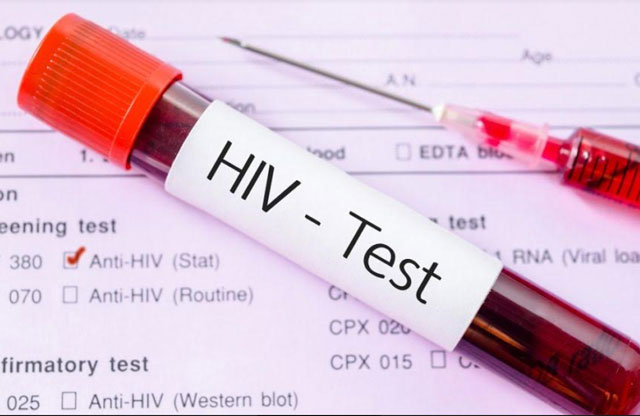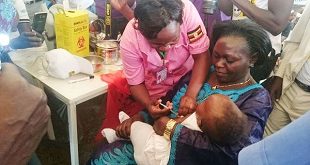
Kampala, Uganda | THE INDEPENDENT | In the scaled-up One Dollar Initiative (ODI), the seeks to obtain at least one dollar, approximately 4,000 Uganda Shillings, from every Ugandan mobile phone user, to mobilize enough money to fund the various HIV/AIDS interventions in the country.
Established in Uganda in 2018, ODI is a global resource mobilization strategy for various interventions including HIV/AIDS funding. In Uganda, it has been majorly used by corporate bodies, and in 2020, UAC rallied the parliament to support the initiative, with a target of 850 million shillings.
“As part of UAC’s new resources mobilization strategy, the initiative has been scaled up to the bigger population, targeting all phone users in the country,” says Dr. Khanakwa Sarah, the head of resource mobilization at UAC.
While unveiling the commission’s resource mobilization strategies, for 2024 to journalists on Thursday, Dr. Khanakwa said a sustainable and reliable resource mobilization strategy had to be implemented to ensure continuity of the interventions, if the disease is to be suppressed. Uganda has an ambitious target of ending HIV/AIDS by 2030.
“We are looking out for take holders that can sustain this cause, even after so many partners are transitioning to other programs. There is much to be done, and that much requires money, though HIV/AIDS seems to be heavily funded, it remains a very expensive program to run. The most important thing here, as a country we must make sure that we stop the new infections, because the treatment program is very expensive, and we can hardly afford it as a country” she said.
Information for UAC indicates that in the year ending December 2022, HIV/AIDS response programs had a financing gap of up to USD 120.4 million (458 billion Shillings), of the required up to USD 780 million, (3 trillion Shillings).
The scaled-up One Dollar Initiative is part of the greater agenda of UAC to have more direct involvement of the private sector players and the bigger population in the last mile run of ending the AIDS scourge in the country. This model has been benchmarked in several African countries, and the UAC believes it can work in Uganda as well.
With over 34 million mobile phone connections (UCC 2023), Khanakwa says that if each deposits at least 1,000 shillings every three months, it will be 4,000 shillings a year, and this will be a significant contribution towards the HIV/AIDS response in the country. The commission is already in partnership with the leading telecom companies which will remit the lamp sum collections at the end of each year.
Worth to note, is that in the total HIV/AIDS response funding, the government contributes only 13.8 percent, with the rest coming from donors. The scaled-up One Dollar Initiative comes at a time when some donor countries are threatening to withdraw their funding to the response, due to Uganda’s passing of the anti-homosexuality act which to them is an abuse of human rights. This could be a big blow to the country’s ambitious target of ending the spread of HIV within seven years from now.
Up to 700,000 Shillings are spent on an AIDS patient treatment annually, Dr Khanakwa says that the treatment component consumes up to 85 percent of the response budget. For more savings, UAC also proposes that cooperate companies should include ARVs on their employees’ insurance policies, to relieve the pressure of government expenditure, since it will only remain to cater for the uninsured persons, especially those in the informal sector.
Alongside the One Dollar Initiative, the commission is to borrow a leaf from the private sector marketing, distribution skills, and channels to disseminate HIV/AIDS information and tool prevention tools to ensure increased efficiency and effectiveness of the various interventions.
“We feel that handling HIV as a business, or with a market-based approach, is more sustainable because we are going to use less money to undertake a bigger program, and that’s how a business person thinks, private company products, reach in every homestead in this country, and these are the same people we are ought to serve but we don’t reach them. This means the private sector has very unique oriented ways of reaching that household which we must copy, ” Khanakwa explained.
Dr. Byamukama Daniel, the UAC head of HIV prevention, says that the ending of HIV/AIDS as a public health threat by 2030, is not just a myth or a fantasy, it is very possible if the goal is collectively handled with every stakeholder effectively playing their role, and evidence from the so far made strides communicate to this.
Byamukama emphasized that the commission counts on the media to demystify the myths about HIV/AIDS, correct the lies about it, as well as fight the stigma built around this disease.
*******
URN
 The Independent Uganda: You get the Truth we Pay the Price
The Independent Uganda: You get the Truth we Pay the Price


